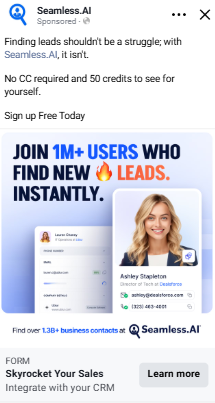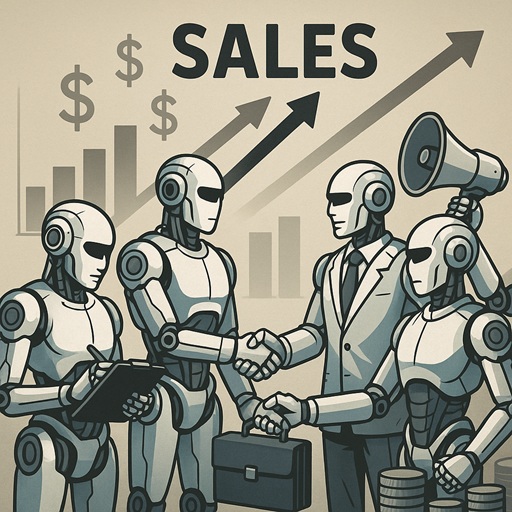The 90s had their fair share of hand-held gaming devices, from Gameboy to Sega Game Gear. One of my personal favorites that doesn’t get much love or attention is Bass Fishin’.
Bass Fishin’ was a fishing simulation game where you used the console like a fishing reel. The better your cast was, the bigger the fish you caught and the more points you earned. I played Bass Fishin’ enough to nearly give myself carpal tunnel, but the lesson I learned was that fishing is as much about your technique and how you fish as it is about where you go fishing.
This same rule applies to B2B lead generation. B2B (Business-to-Business) lead generation is the process of finding prospective clients and persuading them to buy your product or service.
Like fishing, with B2B lead generation, how you identify sales prospects–the tools and strategies you use– are just as crucial as where you go searching for clients. And just as I put hours into perfecting my cast on Bass Fishin’, you have to put time and effort into finding the ideal leads. But when you do, you can reel in the big fish with the right bait and presentation.
This resource covers B2B lead generation, shares tools for every stage of the lead gen process, and offers tips on strengthening your lead-driving efforts.
Why Is B2B Lead Generation Important?
Because a lead or prospect is a potential customer who may buy your product or service, B2B leads are crucial for any company whose primary customers are other companies.
A business is as strong as the number and quality of leads the team pulls in on a regular basis. If you’re pulling in a steady stream, you're setting your business up for success. However, if your access to accurate B2B leads is inconsistent, you won’t be able to keep your pipeline full, generate b2b sales, and ultimately keep the lights on.
Solid B2B lead generation benefits your business:
- Make money. When you have great tools and strategies for retrieving accurate and quality B2B leads, you can close more deals, drive greater ROI, and make that moolah!
- Save time. We all wish we could get a few more hours in the day to get some work done (or sleep in if you’re like me). Well, when you know how to source quality clients efficiently, you can actually save yourself time. Of all the different ways to prospect, generating B2B leads gives you control and speeds up the process of connecting with customers.
- Track progress. Lead generation is a good KPI your team can use to assess goal progress and performance. If you have sales and revenue goals, the number of leads you generate month-to-month can be a smaller goal to help you figure out if you’re on track or behind with those bigger goals.
- Grow. Consistently finding new leads means finding new qualified buyers. When you can expand your customer base, you can increase market share.
When you have bad B2B data for the leads, it can affect your entire company.
Sales reps waste time buying leads with stale data and chasing after unqualified prospects.
Marketing campaigns could fail because your team can’t reach the right audience.
Sales forecasts won’t be nearly as accurate, and your team will have a harder time staying ahead of the competition. They’ll be too busy trying to keep up with consumer behavior and reacting to changes in the market instead of staying ahead of the curve.
In addition to your bottom line and growth, B2B data decay even impacts IT because it forces them to waste time putting out fires from bad data.
Bad lead data isn’t just a problem when it comes to finding new clients. It can also be an issue with long-time customers. If reliable clients change jobs or a new person comes into the decision-making position, and your customer success team is still working with stale data, this could cause high churn rates or lower sales.
B2B data is one of the greatest secret weapons your team could have. Instead of having to play defense whenever there’s a change in the market, good B2B leads help your team take offense like a good bass fisherman would, move proactively, and eventually gain a competitive edge so the big fish don’t get away.
What Are the 4 B2B Lead Types?
A B2B lead is anyone who works for a company, and they might purchase a product or service in the near future. Because B2B is business-to-business, prospects are usually entire teams and companies, versus the more familiar world of B2C (business-to-consumer), where prospects are typically individual buyers. Often, B2B leads are broken into two options: inbound or outbound.
Related: Best Ways to Generate Leads for Business

Inbound Leads
An inbound lead is a customer who contacts your company to learn more about the products and services you sell and potentially buy.
Here are some sources of inbound leads:
- Webinars
- Social media
- Blogs
- Web forms
Strengths of inbound lead generation:
- Generally cheaper than outbound lead generation
- Converts and retains lifelong customers
- Boosts brand authority
Setbacks with inbound lead generation:
- Getting leads is time-consuming
- There are a lot of errors and misfires during the qualification process
- Deal sizes are generally smaller
Outbound Leads
An outbound lead is a (typically) cold lead that Sales Development Representatives (SDRs) hunt for on their own.
Here are some sources of outbound leads:
- Cold calls
- Trade show marketing
- Paid ads
Strengths of outbound lead generation:
- Greater control over the quality of leads and messaging
- Results are faster
- Outbound lead generation is easy to scale
Setbacks with outbound lead generation:
- Expensive
- Outbound leads are harder to convert
- Sales-y outbound tactics can diminish brand authority

Marketing Qualified Leads (MQLs)
A marketing-qualified lead is a lead that finds out about your company (through your marketing team’s efforts. Such as paid ads, discount offers, etc.) and has an interest in your products and/or services.
Keep in mind that when I say “interest,” I don’t just mean hopping on a website and doing some casual window shopping once or twice. An MQL takes specific actions that indicate there’s some potential to become a paying customer:
- Downloading an ebook or a white paper
- Signing up for a demo
- Several website visits in a short period of time
- Adding products to a cart but not buying
Ultimately, MQLs are leads who are taking all the steps and showing the potential to buy, but they just haven’t made the effort to get more serious and speak to a sales rep.

Sales Qualified Leads (SQLs)
When an MQL becomes a sales-qualified lead, a marketing team concludes that they meet lead qualification criteria. Lead scoring criteria will vary from one company to the next. But qualifications typically include budget, company size, etc. The MQL then moves further down the funnel and becomes a sales-qualified lead.

Who Owns Lead Generation?
While some may say that marketing owns B2B lead generation because salespeople have enough on their plate with guiding prospects through the sales cycle and closing. Others would say that sales should handle it because they have a more accurate ideal customer profile, so they know what to look for when it comes to leads.
The truth is, sales and marketing go hand in hand like Batman and Robin, because they both make up for what the other lacks.
Marketing
- Inbound Marketing teams are great with slower, long-term demand generation, where instead of explicitly selling customers on buying your product or services (as sales teams do), they focus on educating customers and building brand awareness.
- Some metrics to consider when you’re measuring brand awareness and demand include brand search volume, organic traffic, and direct traffic.
- Remember the end goal of demand generation is always awareness. You’re trying to get people curious and interested in your brand, so when a problem comes up, you’re one of the first they think of.
Related: What Is a Go-To-Market Strategy? | How to Use Seamless.AI for Marketing | How to Use Intent Data for B2B Marketing
Here are some tactics marketing teams use to build awareness and create demand:
- Encourage customers to leave reviews on sites like G2, Trustpilot, and Capterra.
- Use affiliates for promotion.
- Looking for SMB leads? Try online communities like LinkedIn, Medium, and podcasts. These spaces give you the chance to talk directly to your target customers and get a better sense of the product issues they’re having, as well as what they look for in a dream solution.
- Attending marketing conferences is another way to get in front of warmer target customers who are looking to buy.
These tactics produce a steady trickle of leads, but if a team wanted to really open the floodgates, that would require more money. And a lot of companies (especially smaller startups) just don’t have the budget.
This is where growth hacks come in clutch. Growth hacks help you drive demand and leads but for a fraction of the price.
Growth hacks include:

.png)
- Paid media campaigns. The first sample ad is a part of a recent campaign our paid media team ran on Meta (Facebook + Instagram). It generated 500+ leads at a cost-per-click (CPC) of less than $4.
- SEO takes time, but it’s one of the more cost-effective ways to drive leads. Anything on your website, from user-friendly navigation to persona-driven, can help you get your website higher up in Google search rankings and get in front of more customers.
- Segmented email campaigns
- Invest in the right lead-generating software that’s cost-effective, delivers a real-time database, and makes it easy to maintain data hygiene. Don’t waste time and money buying lead lists or going to stale databases. The right tools can help you drive bigger results and save money in the long run.
Sales
While sales teams don’t have the time to do the slow, plotting research work of marketing, they do a great job of catching and closing all the low-hanging fruit leads, which are those active buyers who are looking for a solution.
Here’s the general process for B2B lead generation in sales:
- Step One: SDRs have to source B2B sales leads. Tools like these can help you get accurate contact info and insights on any contact or company.
- Step Two: SDRs must connect with prospects, introduce their products/services, and ask qualifying questions to see if they’re a good fit and where they are in the buying process.
- Step Three: SDRs book demos with qualified leads to show them the product/service, answer any questions, and learn more about the buying process at the customer’s company (Who are the decision-makers? How long is their buying process? Etc.).
- Step Four: When it gets to the stage of aligning buying committees, account executives come in to pitch to the committee, answer any final blockers, tie up the loose ends, and get the deal closed.
Now that you’ve seen how sales and marketing drive B2B leads, instead of worrying about who owns B2B lead generation, the reality is the best way to generate leads for business is with old-fashioned teamwork. Teamwork makes the dream work. To carry out the most effective B2B lead generation, your best bet is to get sales and marketing aligned and able to work together for the best results.
Related: What Is Personal Selling? | How to Buy Sales Leads
Lead Generation Strategies
Successful B2B lead generation requires more than just finding names—it’s about using the right strategies to attract, engage, and convert prospects. The strongest results often come from a mix of inbound, outbound, and blended approaches, supported by the right technology.
Inbound Strategies
Attract prospects by building trust and authority through content marketing, SEO, social media engagement, and webinars that educate and engage.
Outbound Strategies
Reach prospects directly with cold calls, targeted email outreach, paid ads, and event marketing to generate faster results and keep control of messaging.
Blended Approaches
Combine inbound and outbound for maximum impact—such as following up with inbound ebook downloads through outbound calls or retargeting outbound leads with content.
Which Tool Is Best for Lead Generation?
In order to generate leads, close deals, and drive sales revenue, you have to put together a strong tech stack of prospecting software tools that are going to help your marketing and sales team stay on the same page and crush every stage of the sales cycle. Here are some essentials that we recommend:
- Customer Relationship Management (CRM) Software like HubSpot and Monday.com are great if you have a growing business. HubSpot makes it easy to keep up with follow-ups (80% of sales require five follow-ups before you even get a prospect to bite). You can also create persona-specific email sequences and sales cadences, and keep track of email performance. Monday.com is not only a great CRM tool for sales forecasting, but it also makes project management easier as you can break down workflows, assign contributor roles, track deadlines, and increase visibility on tasks.
- If you’re looking for an Email Marketing Tool that gives you the best value for your dollar, check out Zoho Campaigns. Zoho Campaigns claims to get users “good inbox placement” with features like A/B testing, automated workflows, and domain authentication for deliverability. And if you want to get back down to the basics with a tool that’s streamlined and easy to use, try Campaign Monitor. Campaign Monitor has a variety of templates for hyper-personalization that can turn the most inexperienced into an email design wiz.
- Call me biased, but the best B2B Lead Generation Tool is hands down, Seamless.AI. What makes us top-notch? For starters, our data quality is the best on the market. We’ve been using artificial intelligence to find and verify emails, direct dials, and company insights YEARS before AI sales tools ever became trendy. On top of this, our coverage is unrivaled, with 1.3B+ contact and company records verified (and counting) so you can target decision-makers from all over the world at companies of all sizes (SMB, mid-market, and enterprise). And if you’re tired of doing busy prospecting work, we got you covered. Our automation features streamline the entire sales process—from data enrichment and contact research to list-building and CRM entry, so your team saves time and gets back to closing deals.
- Marketing Automation Tools like Adobe Marketo Engage allow you to launch, track, and scale multichannel marketing campaigns (from email to cell). With customized reports that pinpoint the effects of every touchpoint on your results, you can take the guesswork out of marketing and clone the successful campaign strategies that drive results. Keap is an email marketing and sales platform for growing businesses that can automate crucial steps in your buyer journey (from booking appointments to sending invoice reminders), plus many internal business processes.
Related: Top AI Tools for Business | Types of Sales Enablement Tools
Re-Cap
B2B lead generation is crucial for business growth and survival. But just like with fishing, you need the right tools, the right strategies, and of course… patience. Building a steady stream of high-value leads takes time, but the rewards are worth the dedication.
To get the biggest catch for your business, there has to be clear communication and collaboration between sales and marketing, and the leads have to be accurate and reliable. Make sure that you and your team have a tech stack with all the necessary tools to drive B2B leads from the right Customer Relationship Management (CRM) software to email marketing tools and marketing automation platforms. These tools will streamline your B2B lead generation and enhance lead quality and conversion rates.
We hope these tips help you on your B2B lead hunt and keep you from missing the big bass. Happy fishing! Your next greatest business opportunity is just one reel away!



















